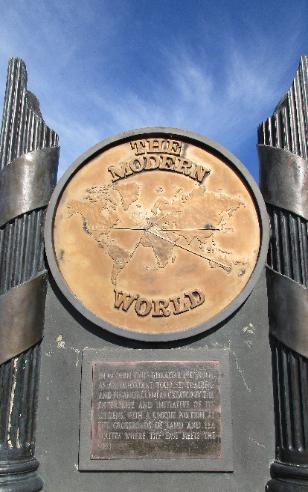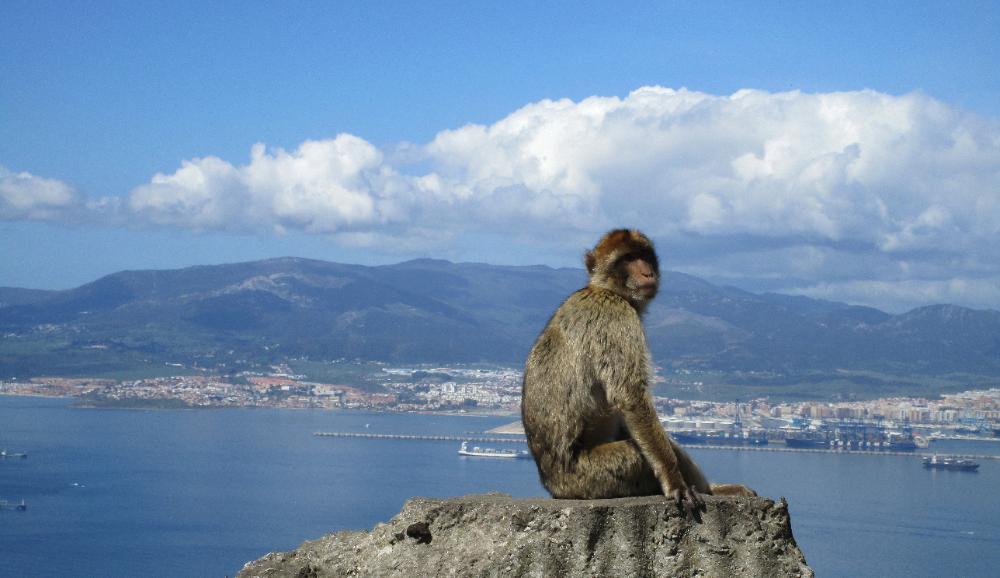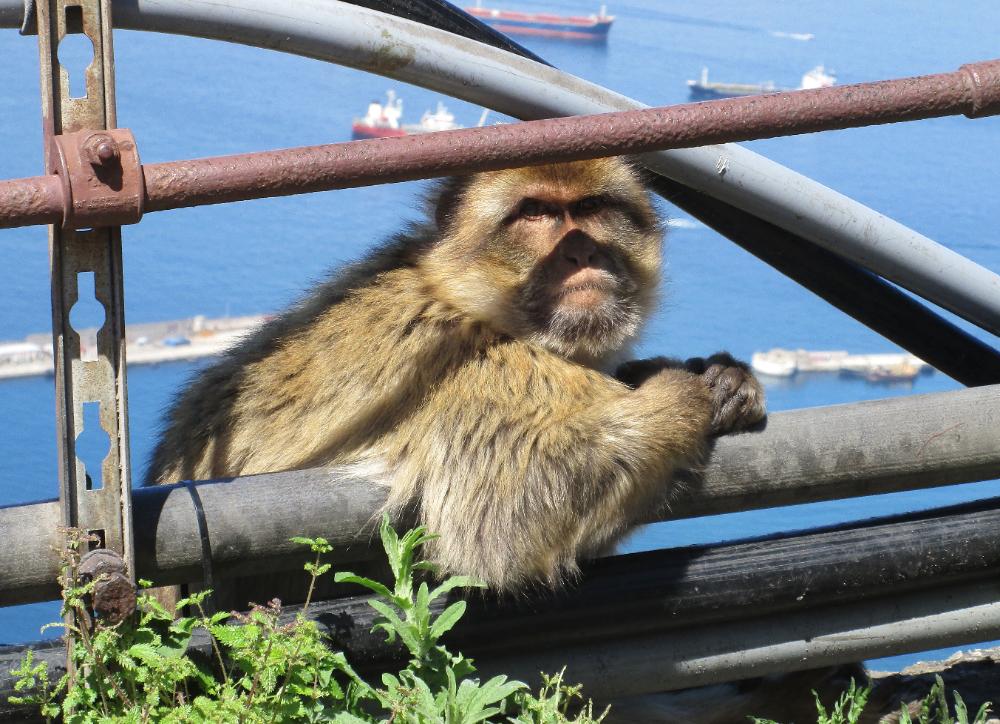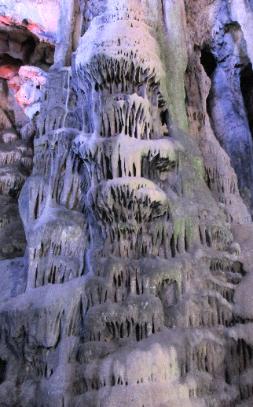
Where We Be





































| We got our first good view of the Rock of Gibraltar from the beach in La Linea, Spain, just across the border from Gibraltar |
| Gibraltar |
The iconic Rock of Gibraltar is so well known it's
almost hard to see it with fresh eyes -- we half
expected to see a Prudential sign overhead.
"The Rock" has become an international symbol
of strength and stability, and its strategic
location at the Strait of Gibraltar means it has
been fortified, attacked, and besieged since
Roman times. Arabs and Berbers from North
Africa invaded this very spot in 711 AD --
ushering in 700 years of Moorish rule in Spain.
The rock is even named after the general who
conquered it: Jebel Tarik ("Mount of Tarik").
Nowadays Gibraltar is a tiny bastion of British
culture at the tip of Spain. Here you can get your
fish and chips and porter beer. But if you want
to get off the beaten path and do something
memorable, we suggest hiking up to the top by
way of the Mediterranean Steps. It's steep but
you'll be compensated with extraordinary views.
almost hard to see it with fresh eyes -- we half
expected to see a Prudential sign overhead.
"The Rock" has become an international symbol
of strength and stability, and its strategic
location at the Strait of Gibraltar means it has
been fortified, attacked, and besieged since
Roman times. Arabs and Berbers from North
Africa invaded this very spot in 711 AD --
ushering in 700 years of Moorish rule in Spain.
The rock is even named after the general who
conquered it: Jebel Tarik ("Mount of Tarik").
Nowadays Gibraltar is a tiny bastion of British
culture at the tip of Spain. Here you can get your
fish and chips and porter beer. But if you want
to get off the beaten path and do something
memorable, we suggest hiking up to the top by
way of the Mediterranean Steps. It's steep but
you'll be compensated with extraordinary views.
| The hand-hewn parts of the tunnel are the most interesting, but the tunnels continue for much longer. British engineers in World War II increased their length to 25 miles total! |
| La Linea is a pleasant town in its own right, with a cute central square and pedestrian-only streets offering inexpensive food and lodging |
| We saw the key sights in one long day of touring, starting with Europa Point. Here, at Gibraltar's southernmost point, the Mediterranean meets the Atlantic. |
| Harding's Battery at Europa Point, built by the British in the 19th century, was capable of firing 800-pound projectiles to the far side of the Strait of Gibraltar. You can descend into the gun battery, which houses some informative plaques. |
| From above you can see Europa Point, the Strait of Gibraltar, and (beyond) Mount Jebel Musa in Morocco. In ancient times Gibraltar was one of the two "Pillars of Hercules," the other being Jebel Musa. The pillars represented the limits of the known world. |
| During the approximately one-hour climb you'll come across caves where Neanderthals once lived. These caves may even be where they last died out some 24,000 years ago. |
| Still a long way to go! But if you take your time, it's a steady climb and not too difficult. |
| And you'll hug the cliff face as you switchback up the steps. Here you can see ships waiting to pass through the Strait. |
| Your reward? Glorious views like this one almost the entire way to the top. |
| Gulls called, flowers bloomed, and views of the Mediterranean and the huge Rock itself dominated our attention |
| Gibraltar's other main attraction is monkeys. These Barbary macaques (just like the ones we saw in Morocco) are everywhere in Gibraltar -- including on top of cars! |
| These are the true rulers of Gibraltar (or at least they think so) |
| Most of the Rock's upper area is covered by a Nature Reserve, and some 300 Barbary macaques make their home here. This is the only wild population of monkeys in Europe. |
| Your ₤10 admission to the Nature Reserve includes entry to St. Michael's Cave. We were surprised at just how big this cave is -- and it's located halfway up the Rock. |
| Of course the color is added with colored lights, which is either pretty or gaudy depending on your point of view. Notice Robin color-coordinated in the center! |
| St. Michael's is just one of over 100 limestone caves within the Rock of Gibraltar |
| From the cave we hiked across the Nature Reserve to where the cable cars arrive. (FYI: The cost of the cable car is in addition to the Nature Reserve admission.) |
| As you can see, the views from here are tremendous. That's the town of Gibraltar snugged below. |
| Around to the right of the previous photo is La Linea, the Spanish border town. It can make for an affordable alternate base for your visit (it's where we stayed). |
| Next it was on to the Great Siege Tunnels -- also included in the Nature Reserve admission. These tunnels were HAND-HEWN back in the late 1700s as Britain did all it could to hold onto its possession. |
| The cannons atop Gibraltar helped the British effectively control the Strait of Gibraltar. The caves went on for a long time, with openings here and there for cannons (and ventilation). Life-size mannequins gave us the sense of what it would have been like to man the cannons during the Great Siege, which began in 1779 and lasted 3½ years! Spain and France were unsuccessful in the end. |
| We continued downhill to the “City Under Siege” exhibit, an interesting portrayal of life during the Great Siege. Bored soldiers chiseled graffiti into the walls, and discipline was strict to say the least. Famine was the biggest issue -- a single cabbage cost 2½ days of a soldier's pay! |
| Our final stop was the Moorish Castle, built around 1333. Inside we climbed to the top even though there wasn't much to see. |
| Phew! Finally down to the bottom, which is where we found all the people. They were shopping on pedestrian-only Main Street and drinking beer on Casements Square. |
| But the Moorish Castle is impressive from the outside -- and it withstood no less than ten sieges! |
| One last look at Gibraltar as we made our way back to La Linea. The border crossing was quick and easy when we visited. |










| Two sides of the same monument celebrate Gibraltar's importance to the ancient and modern world. The monument stands near the beginning of the Mediterranean Steps, which offer a steep but scenic way to the top. |
| You'll pass through a dark tunnel along the way |

| This is the view from the high point of the trail at O'Hara's Battery (9.2" guns near the top of the Rock) |
| The British sense of humor is alive and well in Gibraltar |